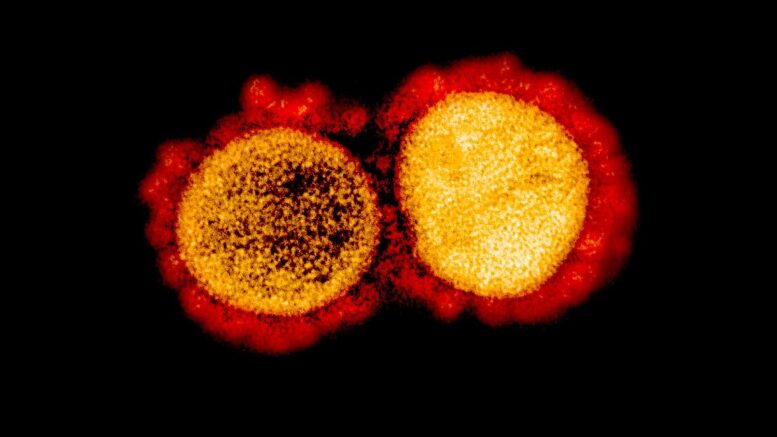Transmission electron micrograph of SARS-CoV-2 virus particles, isolated from a patient. Courtesy of NIAID
A panel of experts convened by the National Institutes of Health has recommended standardized criteria to define infection of the placenta with SARS-CoV-2, the virus that causes COVID-19. The panel also offers guidance for the best methods to evaluate placental SARS-CoV-2 infection for research and clinical applications. Their recommendations aim to help streamline research on SARS-CoV-2 infection during pregnancy and ultimately optimize clinical care.
SARS-CoV-2 infection during pregnancy has been linked to complications that may involve or be reflected in the placenta, including preeclampsia and preterm birth. To date, researchers have used a variety of methods to diagnose SARS-CoV-2 infection of the placenta, making it difficult to compare results from different studies and to establish definitive scientific evidence about the risks of placental infection.
To address these gaps, NIH’s Eunice Kennedy Shriver National Institute of Child Health and Human Development (NICHD) virtually convened a group of experts in obstetrics, virology, placental pathology, infectious disease, immunology and molecular biology to propose a standardized definition of placental infection. The resulting guidance appears in the American Journal of Obstetrics and Gynecology.
The experts recommend preferred techniques to detect SARS-CoV-2 replication, viral transcripts or proteins in placental tissue. Depending on the scientific rigor of the technique used, the likelihood of placental SARS-CoV-2 infection may be classified as definitive, probable, possible or unlikely. The authors encourage investigators to use the most scientifically rigorous technique available in their laboratory or clinic. They also recommend that scientific papers reporting placental SARS-CoV-2 infection describe the location and number of placental tissue samples collected, method of preserving the tissue and detection technique. Finally, they offer guidance for handling, processing and examining placental tissue. The authors anticipate that use of these recommendations will make it easier to compare and interpret results across studies.
Reference: Roberts DJ, Edlow AG, Romero RJ, et al. A standardized definition of placental infection by severe acute respiratory syndrome coronavirus 2 (SARS-CoV-2), a consensus statement from the National Institutes of Health/Eunice Kennedy Shriver National Institute of Child Health and Human Development (NIH/NICHD) SARS-CoV-2 placental infection workshop. American Journal of Obstetrics and Gynecology DOI: 10.1016/j.ajog.2021.07.029(link is external) (2021)
Source: NIH
